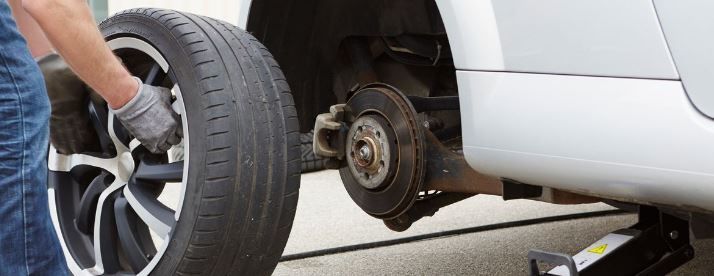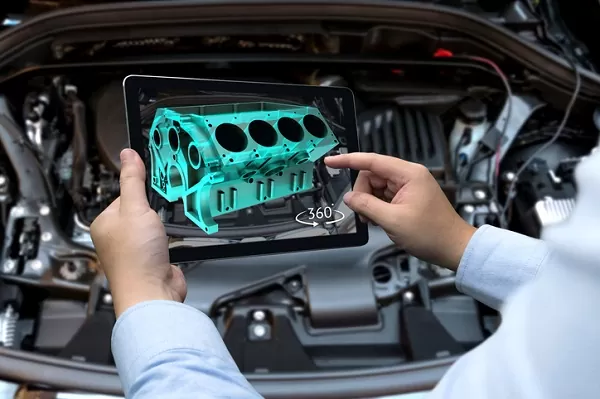Have you ever been around when your car is getting new tires? Perhaps you just drop it off for a general service and tire changing or rotation is going to be one small part of that service, so you don’t know. The answer may surprise you.
In today’s blog, we are looking at the central question: how long does it take to get new tires? But we’ll also take a deep dive into why tires need changing, what can make it go faster or take longer, and whether it’s quicker or not just to do it yourself.
Common Reasons for Needing a Tire Change
Let’s begin by looking at all the most common reasons that people get their tires changed in the first place. It happens more commonly and more often than you might suppose.
Excessive Wear and Tear
The first and most common reason for a change — or a rotation depending on the mileage and amount of wear and tear — is your tire tread being worn down and becoming unroadworthy. It is a legal requirement that all tires maintain a minimum legal limit of 2/32 of an inch in tire tread. That may sound like an obscure number, but it’s well-established and easily tested as long as you have a penny on you.
To check on your own tread, take a penny and shove poor old Abe Lincoln head first into the tire tread. The part of the coin you’re really observing, however, is the “In God We Trust” line across the top above President Lincoln’s head. If the words are obscured entirely by your tire tread, then you have at least the 2/32 of an inch minimum. If the text is visible, you’re in trouble.
Rips or Cuts in the Sidewall
Another cardinal sin that spurs a tire change is having rips or cuts in the tire sidewall. No amount of cutting, ripping or other serious damage is permitted on the sidewall. That is the main structure of the tire, and has to be in perfect condition. Therefore, this kind of damage means you need an immediate change.
Punctures and Blowouts
Punctures can be caused by all kinds of sharp debris that is left in the road, including nails, glass, metal shards and more. Nails are probably the most common thing, and can get themselves fully embedded in your tire and start a loss of air before you’ve even noticed. Nails are small enough that you might not notice you’ve been punctured straight away, and it wouldn’t create much of a change to the driving dynamic if it’s been flattened against the wheel. It’s often too late and the damage is too far gone before we find it.
Winter is Coming…or Going
Drivers in some climates, such as in the Midwest or Northeast make the switch to winter tires when the snows are starting to fall. Winter tires offer far superior traction and thus allow one to keep a vehicle more safely on the road when driving simply can’t be avoided. Switching to winter tires means a change for all four tires.
You’re Heading to the Racetrack
Finally, this one may only apply to a minority of drivers, but it’s still an important reason to change tires. If you have a car that you use as your street-legal car day to day, but perhaps also race at the weekend, you might have a set of racing tires, “slicks” to use on the track. That would mean changing to and from these tires every track day.
How Long Does it Take to Get New Tires? Professional
Fans of NASCAR and Formula 1 may know that this level of professional tire changing is remarkably fast. NASCAR crews clock in at around 8 seconds for a typical pit stop, while Formula 1 teams do even better. In 2019 during the Brazilian Grand Prix, Max Verstappen of the Red Bull team pulled in for a pit stop where all 4 tires were changed in an eye-watering 1.82 seconds. You might find that hard to imagine, but seeing is believing.
OK, but what about out here in the real world? Interestingly, despite all of our technology moving forward, it can actually take longer nowadays to change tires than it did back in the 1990s. The main difference is…all the technology. Tire pressure monitoring systems, new ways of tire and steering balancing, inner mounting flanges and more. At the professional level, one should expect it to take about 45 minutes to replace all 4 tires, but that will also include balancing. The tire changing part should only take 15-20 minutes to complete.
Of course, how everything fits into the auto shop schedule is also key. They might change the tires in a flash, but then leave the car for hours awaiting alignment while they complete other urgent work, or while awaiting another colleague to come and do the alignment.
How About Changing Them Yourself?
If you’re changing the tires yourself and assuming you already have the gear and basic knowledge of how to do it, you would expect to finish dealing with all 4 tires in about 35-45 minutes, too. The difference, however, is that you wouldn’t get a balance during that time.
The slower time just comes from having to do everything yourself. If you had someone to help you do jobs like loosening or tightening the lug nuts, for instance, then it might go faster.
Tools and Processes Needed for Tire Changing
Many are daunted by the process of having to change a tire by themselves, but the process is actually relatively simple. Having said that, it’s only simple when you have the right equipment, a bit of knowledge, and a nice helping of confidence to go along with it.
The minimum set of tools needed to complete the job include either a spare tire, or the new tires depending on your situation and what you’re doing; a carjack, lug wrench, wheel wedges, alignment studs, extension bar, and your car’s owner’s manual if possible. Useful additional items include gloves, an emergency triangle (when changing roadside), a flashlight, and a wheel lock.
The important steps include:
- Securing the car in place with the parking brake, put it neutral, and if needed placing wedges underneath
- Loosening the lug nuts
- Raising the vehicle
- Removing the lug nuts
- Dismounting the original tire
- Placing on the new tire
- Tightening the lug nuts
Professional outfits can often do this faster because they have power tools for the lug nuts, lifts and hoists to raise the whole car and make removal and replacement faster and easier, and so on.
Does Wheel Alignment Always Follow a Tire Change?
If you are replacing all 4 tires, then a wheel alignment is a good idea. Most of the time nowadays, alignment can be checked fairly quickly using special machinery. Changing a single tire usually doesn’t prompt any need for alignments to be checked, but it never hurts, especially if, as many auto shops do, you can get an alignment check as a free and included part of the deal. The process takes nothing away from your vehicle and new tires, and will tell you with certainty that the alignment is good.
Go Home








